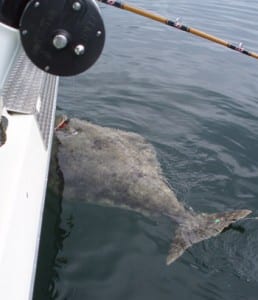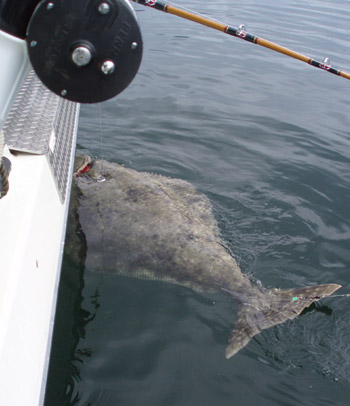The International Pacific Halibut Commission Friday voted to recommend a 1.7-million pound increase in the coast-wide catch of halibut.
The joint U.S. and Canadian body oversees management of the highly prized bottom fish from California to Alaska. The commission held its annual meeting in Vancouver, British Columbia this week.
The IPHC voted for a coast-wide catch for combined for commercial and charter fisheries of 29.223 million pounds, up from last year’s 27.515 million pounds.

Commissioner Jim Balsiger of Alaska noted wider participation at this year’s meeting. “I found it refreshing is the right word, but it’s certainly a change in direction that we had other sectors than the directed halibut users in the room,” Balsiger said. “I think it’s the only way we can make progress on what has been the major issue, major point of contention between Canada and the U.S. up here, is the other users of halibut that have not been in the room before. They were here full force. I think that’s a great step forward.”
The commission heard presentations on the issue of halibut bycatch, or fish caught in other fisheries by boats targeting other species. That included input from Bering Sea trawl fleet representatives and others on efforts to reduce bycatch. The additional halibut removal increased coast-wide last year, to over nine million pounds, with over six million pounds of that coming from western Alaska and the Bering Sea. Halibut are caught in trawl nets by boats fishing for sole and hook and line boats fishing for Pacific cod.
Commissioner David Boyes of Canada said the bycatch issue was important for the entire coast. “Juveniles from the Bering Sea migrate very extensively. They populate all areas of the coast right down to the southern most part of the range of this species. And so everybody has a vital interest in getting bycatch down to the lowest level that’s practicable, as it says in the Magnuson Stevens Act.”
The Commission plans to meet with the North Pacific Fishery Management Council on the issue February 5th. That council is scheduled to take action on recommendations for bycatch limit reduction measures this June. Those measures could be in place for 2016.
National Marine Fisheries Service assistant administrator for fisheries Eileen Sobeck wrote to the commission seeking a higher catch limit for the longline fleet in the Bering Sea. She highlighted the importance of the directed fishery to residents and businesses, along with efforts to reduce bycatch by other fishing fleets. The commission voted to recommend the same level for area 4, the Bering Sea and Aleutian islands, as last year.
For Southeast area 2C, the commission approved a combined commercial and charter catch of 4.65 million pounds. That’s an increase from last year’s limit of almost half a million pounds.
For the central Gulf, area 3A, the commission recommended a combined commercial and charter limit of 10.1 pounds. That’s also an increase from last year, of over 600-thousand pounds.
The Commission also adopted catch-share plans for Southeast Alaska and the central Gulf that impact the number and size of halibut that charter anglers can keep.
Area 2B, British Columbia, was approved for just over seven million pounds, also an increase from last year’s catch.
Commissioners approved a season start date of March 14th and end date of November 7th. Balsiger of Alaska was appointed chair for the next two years. The commission’s next annual meeting is in Juneau a year from now.












